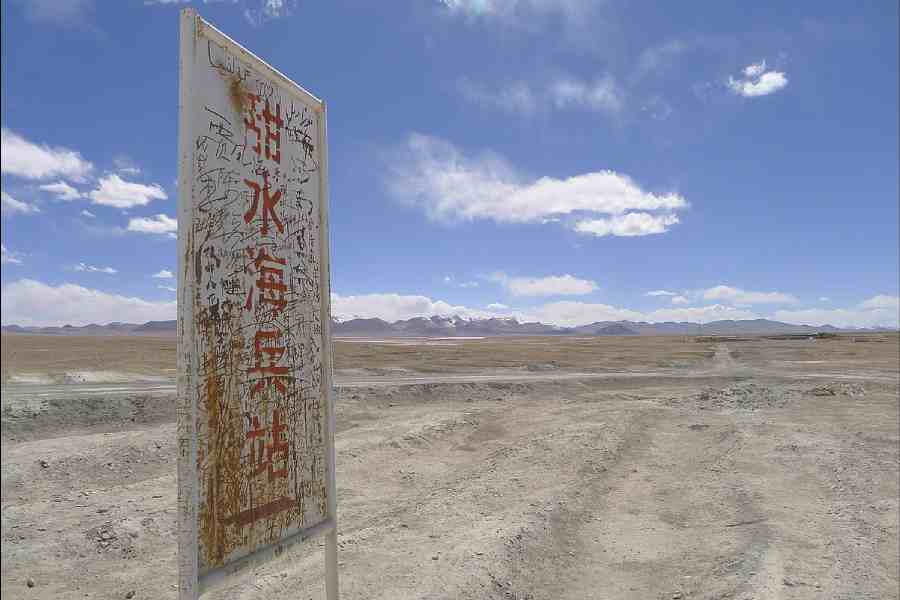The Chinese look to be digging in for a long stay in the border areas they hold in the disputed territory of Aksai Chin region, according to a new study by London-based think-tank Chatham House. China and India have just completed the 18th round of talks on demarcating the dividing line between the two armies in Ladakh and the Chinese aren’t giving an inch in the disputed icy territory.
“The PLA is now firmly ensconced in Aksai Chin and looks set to remain there… posing an increased strategic threat to India,” say John Pollock and Damien Symon, authors of the Chatham House study titled “Are India and China Bound for Another Border Clash.”
The Chinese have built long-term military infrastructure like heated barracks in the desolate, uninhabited region where both armies once sent out small border patrols. The new reality is harshly visible in the Galwan Valley scene of the deadly June 2020 clash between Indian and Chinese troops. “In the Galwan Valley, a number of PLA bases connected by roads can now be seen leading up from the main standoff site, following the path of the frozen river,” says the study by the international relations group.
The study says the frontline structures are backed strongly by roads and helipads that would enable the quick movement of troops in the event of a conflict. Finally, these are supported by newly expanded facilities like newly built heliports in the Tibet Autonomous Region (TAR).
The study suggests that India was slow to respond when China’s People’s Liberation Army (PLA) began strengthening its positions in Aksai. “That spring (in 2020), the PLA entered Aksai Chin in force.
By the time the Indian Army responded, the PLA had established temporary positions at key sites. It was speculated in the Indian media that vital intelligence had failed to reach local Indian commanders, while those in senior positions allegedly underestimated the intentions of the PLA,” says the study.

What is a serious worry for India is that the Chinese have a long-term plan to build the G695 highway to be completed by 2035 through the length of Aksai Chin. The road could also be read as a statement of intent from Beijing to New Delhi, signalling that Aksai Chin will remain part of China
Indian analysts now believe the stepped-up Chinese aggressiveness on the border with India started long before the brutal Galwan encounter and are part of a long-term strategy to take a muscular stand with all its neighbours.
“I think it’s part of overall getting tough on disputes, shoring up your own claims, creating facts on the ground. It just happens that in their west we are the biggest actor affected,” says Manoj Kewalramani, fellow, China Studies and Chairman, Indo-Pacific Studies Programme, Takshashila Institution.
Kewalramani adds: “I am not optimistic about any talks. The Chinese do not seem interested in yielding at all. This build-up is a structural shift, which is here to stay. It is not because of anything we are doing with the US.”
Kewalramani reckons that the toughening Chinese approach to India can be traced all the way back to 2015-16 when the PLA reorganised its seven military commands into five theatre commands.
The Western Theatre covers a huge area and includes the border with India, the Af-Pak sector and also Central Asia. The main military rival here is obviously India. “The reorganisation of theatre commands to put all of the Indian border under one command was the start,” says Kewalramani. Crucially, he points out, “This was well before Doklam. Since then, there has been a gradual advance.”
The Doklam standoff came in 2017 soon after the reorganisation of the theatre commands. Almost simultaneously, the Chinese began developing their string of ‘moderately prosperous’ or ‘Xiaokang’ border villages close to Arunachal Pradesh. “This has been in the works for some time,” says Kewalramani.
The area which has the greatest potential for conflict is the Depsang Plains where India sent frequent patrols till recent times. The Depsang Plains are of importance to India because it’s close to Daulat Beg Oldi, where we operate the world’s highest airstrip. Recent military talks have focused intensely on this region.
What is a serious worry for India is that the Chinese have a long-term plan to build the G695 highway to be completed by 2035 through the length of Aksai Chin. It, “will run the length of Aksai Chin through the Depsang Plains, south past Galwan Valley and towards Pangong Tso,” says the Chatham House study. “The road could also be read as a statement of intent from Beijing to New Delhi, signalling that Aksai Chin will remain part of China,” the study says. “In Raki Nala, a river valley south of the contested Depsang Plains, Chinese outposts are visible, potentially able to block Indian patrols in the area,” the think-tank notes.
India’s priority is to avoid an outright military confrontation with China but “the danger of an accidental clash escalating into a Sino-Indian crisis between the two nuclear powers is very much present,” the authors note.
“India’s leadership quietly recognises the significant challenge Beijing and its modernised armed forces represent,” Chatham House says. New Delhi has made "a multi-faceted” response and “has sought to reciprocate Chinese moves,” the study says. But the likelihood is that India’s armed forces will now have to match a large-scale Chinese presence in Aksai Chin for years to come.










